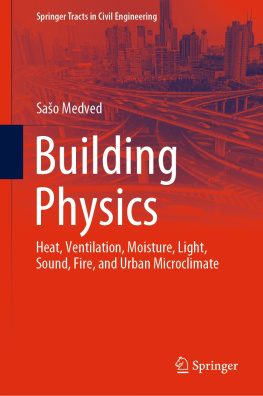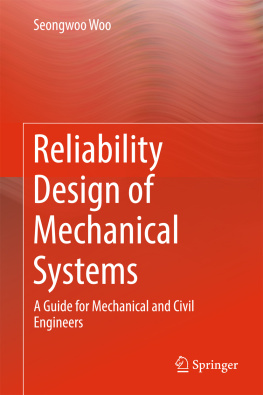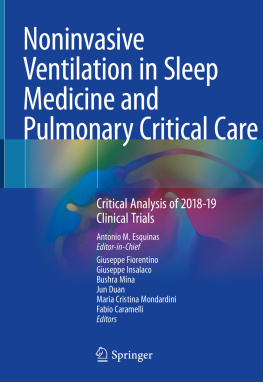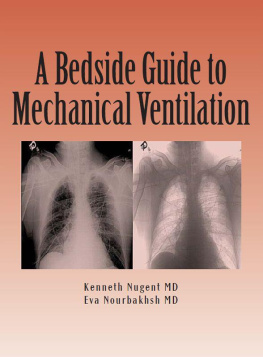Medicine is an ever-changing discipline and the subject matter of this book is no exception. While the author has done his best to ensure that this book reflects contemporary evidence-based practice, new developments in the field may supersede the material published here. Only properly trained and licensed practitioners should provide medical care to patients with respiratory failure. Nothing in this book should be construed as advice regarding the care of a specific patient or group.
Copyright 2018, 2012 by William Owens, MD
All rights reserved. This book or any portion thereof may not be reproduced or used in any manner whatsoever without the express written permission of the publisher except for the use of brief quotations in a book review.
Second Edition
Cover Design by Lorien Owens
Published by First Draught Press
Columbia, SC
ISBN 978-0-9852965-4-4
Printed in the United States of America
To Lorien, my best friend and wife,
And to William, Zach, and Amelia, the best kids I could ever hope to have.
Table of Contents
Introduction
So, here you are in the Intensive Care Unit at 3:30 in the morning. The Emergency Department has just admitted a patient to your servicea young man with a rather sudden onset of fever, rigors, and respiratory distress. He had to be intubated in the ED and the ventilator seems to be alarming with a nerve-racking frequency. His chest X-ray looks horrible, with diffuse infiltrates and consolidations. The ICU respiratory therapist looks at you and asks the question you have been dreading since the patient arrived Doctor, what vent settings do you want?
This is a familiar story for those of us who spend a lot of time in the ICU, and an experience that just about every resident has at least once during his or her training. Mechanical ventilation can be intimidatingit has its own terminology, not all of which makes sense; its a life-sustaining technology, and misapplication can have serious consequences; and practitioners of mechanical ventilation tend to talk in esoteric ways about what the ventilator is doing. This can confuse even the smartest resident or medical student.
To make things worse, there arent a lot of practical resources for busy physicians who just need some quick guidance on how to adjust the ventilator. Dont get me wrongthere are plenty of great textbooks on mechanical ventilation. And, if you have the time, they are well worth reading. The operative word, however, is time. Reading a hundred pages on the pros and cons of pressure control ventilation may be a good use of an afternoon in the library but its wholly impractical while taking care of patients in a busy ICU. Whats necessary is a how-to guide, and thats why Ive written this book. Since theres only one author, this book will be biased. Not too much, I hope, but Im not delusional enough to think that my approach is completely objective and based in fact. Like everyone else in medicine, personal anecdote and experience has shaped my practice.
The first part of this users manual is designed to help you make good decisions quickly. It is broken down into clinical problems with a proposed approach for each. This is something that you can use on the fly. It closes out with the Eleven Commandments of Mechanical Ventilation.
The second part of the book is intended to teach you about mechanical ventilation. The chapters are short, and each can be read easily within 15-20 minutes. Here, youll learn to speak the language and understand the rationale for why things work and why intensivists do what they do.
At this point, its necessary for me to point out that while this book is chock-full of great advice, none of it is specific to the care of any individual patient. Have any of your faculty ever told you that the patients dont read the textbook? Theyre right. Every patient needs an individualized approach. Believe it or not, my lawyer didnt make me write this. Its just common sense .
Philosophy of
Mechanical Ventilation
The art of medicine consists of amusing the patient while Nature takes its course.
Voltaire
Mechanical ventilation is a wonderful tool. The birth of modern-day critical care occurred in Copenhagen in 1952, when Bjorn Ibsen realized that positive pressure ventilation could save lives during a polio epidemic when the iron lungs (a negative pressure ventilator) were failing. The most common reason for admission to a medical intensive care unit is the need for mechanical ventilatory support. The combination of endotracheal intubation and positive pressure ventilation has likely saved hundreds of thousands, if not millions, of lives.
Likewise, artificial ventilation has prolonged the lives of thousands of people afflicted with spinal cord injuries and devastating neuromuscular diseases. Ventilators attached to wheelchairs permit patients with these conditions to engage in life, to pursue their interests, and to generally live lives that would not have been possible a half-century ago. Truly, this invention has had a positive effect on many, many people.
As is the case with any technology, however, there is the potential for misuse. It is essential that anyone working in an intensive care unit remember the Third Commandmentthat the ventilator is a means of support, and not a cure for any condition. In other words, it is folly to believe that the application of mechanical ventilation can reverse chronic lung disease, malignancy, congestive heart failure, or any of the myriad diseases and injuries that result in respiratory failure. The ventilator exists to maintain the respiratory and metabolic functions of the lungs until the patient recovers from his or her illness. It cannot make the patient better by itself. This is actually a point lost on many physicians, who believe that small tweaks and adjustments to the ventilator will accelerate the patients recovery from acute respiratory failure.
If it is important for physicians to understand the natural history and trajectory of a patients disease, it is equally important that the physician present this information to the patient and his family in concise, understandable, and even blunt terms. A life spent connected to a ventilator may be acceptable to a patient with amyotrophic lateralizing sclerosis, who may require mechanical ventilation but can otherwise speak, interact, and engage in what he considers an acceptable quality of life. It is a different matter entirely for a patient suffering from a massive intracerebral hemorrhage who is comatose, and is expected to remain comatose for, if not the rest of his life, a great deal of it. While the patient or his family may consider this to be a worthwhile existence, it behooves the physician to inform them of the stark realities of preserved life on a ventilator (including the medical, social, and financial ramifications) before they pursue this treatment option.
So, what is a dedicated, caring physician, nurse, or respiratory therapist to do? Unsubstantiated optimism can be harmful, but so can overly pessimistic nihilism. Most patients with respiratory failure who recover from the inciting illness or injury will recover; true ventilator dependence, meaning a need for mechanical ventilation more than a year afterward, is rare. Heres what we can do:













